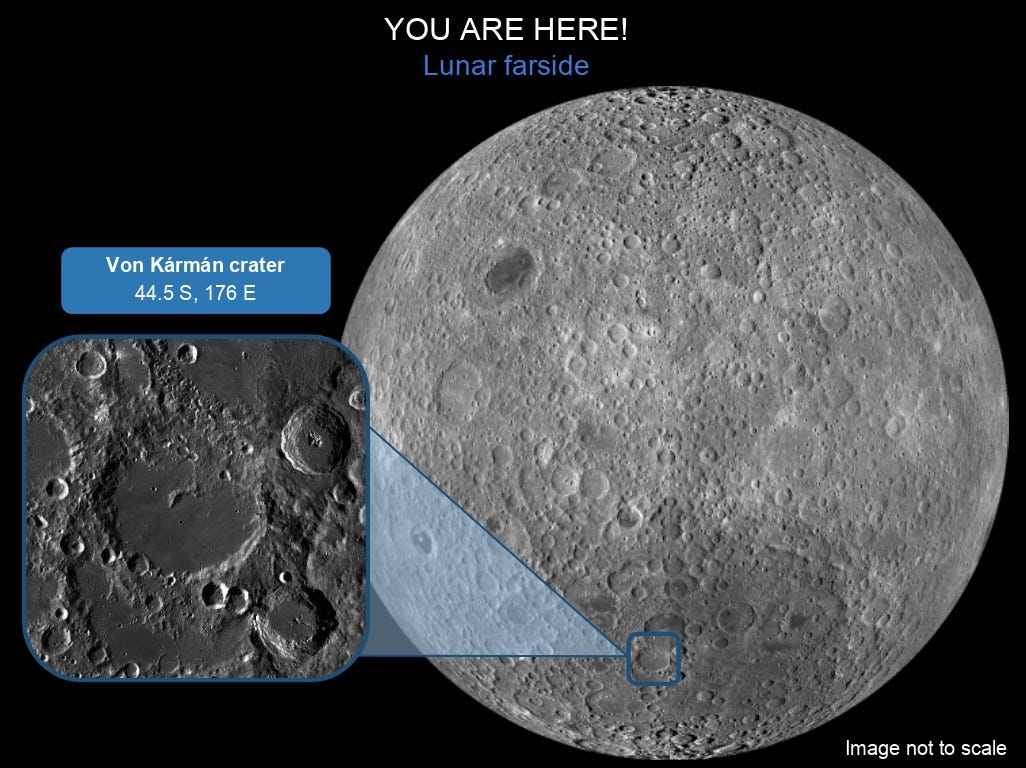Chang’e 4 landing site
The ancient Von Kármán crater on the Moon's farside.
Seen here is the landing region for the first ever soft-landing mission on the Moon's farside, the Chinese Chang'e 4.

The northern part of the 180 km diameter Von Kármán crater is overlaid by the crater Leibnitz, suggesting that Von Kármán formed earlier. The roughness of the crater walls also indicate its old age. The Chang'e 4 landing site is on the eastern part of the crater.
What is even more interesting about Von Kármán crater is that it resides in an even larger crater, the South Pole-Aitken (SPA) basin, which at 2,500 km diameter is the largest crater on the Moon!

The SPA basin was a result of a large scale impact when the Moon was young, no less than 3.9 billion years ago. The huge impact carved heavily into the lunar surface, going as deep as 13 km! Such carving exposed the deeper lunar crust, and possibly parts of the Moon's mantle as well! Landing in any part of SPA is thus immensely valuable to understand evolution of the Moon and learn about its internal structure.
All the craters within SPA, including Von Kármán, carve further into the lunar crust than the original SPA impact. However, the smooth floor of Von Kármán indicates that it has been subjected to lava flows after its formation, thereby hiding the crustal material underneath. The good news is that material thrown off during formation of nearby craters have been deposited in Von Kármán, waiting for Chang'e 4 to study!
The Chang'e 4 rover will study the exposed lunar interior on the surface using a spectrometer and the subsurface using a ground penetrating radar. The mission has the potential to revolutionize our understanding of the Moon and fill a major gap in our understanding of such a prominent lunar region.

